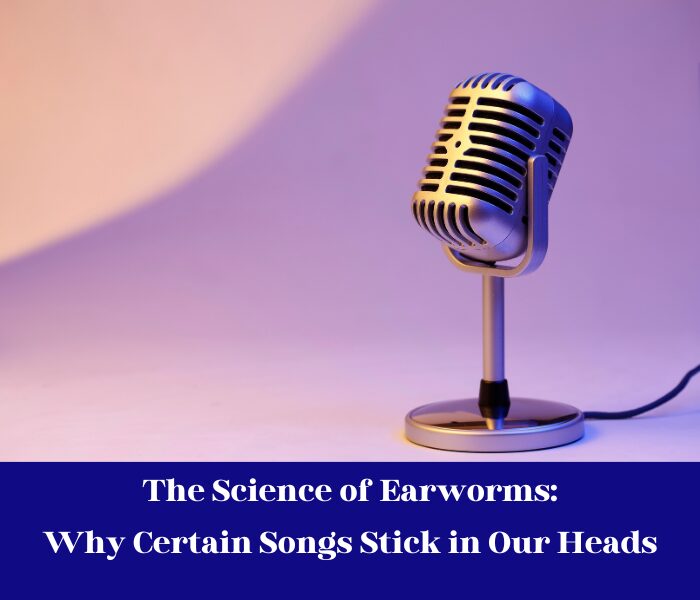Presentation
Have you at any point found yourself unfit to get a melody somewhere far away from me? You hear it on the radio or in a film, and out of nowhere, it’s replaying over and over inside your brain. These infectious tunes that appear to stay with us are known as earworms. However, what precisely are earworms, and for what reason do specific tunes have such an uncanny capacity to relocate to our heads?
In this blog entry, we will investigate the captivating science behind earworms and uncover the brain research and neuroscience that make sense of why they happen. We’ll likewise dig into factors that make melodies stick in our minds and analyze what these melodic pieces can mean for our mind-set. Furthermore, dread not! We’ll try and give a few hints to disposing of those tireless earworms when they become excessively.
So whether you love them or detest them, go along with us as we leave on an excursion through the confusing universe of earworms – where tunes attack brains and melodies won’t give up!
What are earworms?
What are earworms? Earworms, otherwise called “tacky tunes” or “compulsory melodic symbolism,” are those appealing songs that get caught in our minds and replay over and over. You know the ones – those melodies that you just apparently can’t shake off regardless of how diligently you attempt.
However, what precisely aims these annoying earworms? The response lies in the multifaceted activities of our cerebrums. Our mind’s hear-able cortex is liable for handling sounds, including music. At the point when we hear a tune, certain examples and rhythms enact this piece of our cerebrum, making brain associations related with the song.
Curiously, research has shown that straightforward and redundant tunes will quite often be more inclined to becoming earworms. This might be on the grounds that our minds track down solace in commonality and straightforwardness. Moreover, close to home elements can likewise add to the tenacity of specific tunes. On the off chance that a specific tune serious areas of strength for triggers or recollections, playing on repeat in your mind is more probable.
Additionally, there is by all accounts individual contrasts in vulnerability to earworms. Certain individuals might encounter them more as often as possible than others because of different factors, for example, character qualities or mental cycles connected with memory and consideration.
While having an earworm can be baffling on occasion, scientists have discovered a few advantages related with these melodic circles. They can act as a type of mental excitement and give brief help from weariness or stress.
Taking everything into account… Uh oh! Sorry about that goof! We should save the end for later on in this blog entry when we’ve covered every one of the fundamental parts of earworms.
The brain science behind earworms
The brain science behind earworms is a captivating area of study that tries to comprehend the reason why certain tunes play on repeat in our minds. Specialists have found a few factors that add to the peculiarity of earworms.
One potential clarification is that appealing tunes and redundant examples are bound to stick to us. These components make a feeling of commonality and consistency, which can be pleasurable for our minds. Also, melodies that summon compelling feelings or recollections are bound to become earworms.
One more mental component at play is the manner in which our minds cycle music. At the point when we pay attention to a tune, it enacts different region of the cerebrum engaged with memory, feeling, and prize. This actuation reinforces brain associations connected with the music and makes it simpler for the tune’s song or verses to replay to us.
Besides, research recommends that specific character qualities might make people more defenseless to encountering earworms. For instance, individuals with more significant levels of neuroticism will generally report encountering more regular and nosy earworms contrasted with the people who are less masochist.
Understanding the brain science behind earworms gives important experiences into what music means for our psyches and impacts our contemplations and ways of behaving. By disentangling these components, analysts desire to further develop medicines for people who end up tormented by tenacious or undesirable melodic circles playing in their minds
The neuroscience of earworms
The peculiarity of earworms has captivated researchers and specialists for quite a long time, prompting various investigations investigating the brain instruments behind this exceptional experience. By diving into the domain of neuroscience, we gain significant bits of knowledge into why certain tunes stick in our minds.
One critical area of interest lies in the mind’s hear-able cortex, where sound handling happens. Neuroimaging studies have shown that when we pay attention to music, explicit locales inside this cortical district light up with movement. These regions are answerable for perceiving examples and tunes, assisting us with framing recollections related with those specific sounds.
Moreover, research recommends that earworms might be connected with a peculiarity called “compulsory melodic symbolism” or IMI. This alludes to the unconstrained age of melodic contemplations without intentionally conjuring them. Concentrates on utilizing utilitarian attractive reverberation imaging (fMRI) have recognized mind networks associated with producing IMI episodes, incorporating locales related with memory recovery and profound handling.
Besides, neurochemical processes assume a urgent part in forming our experience of earworms. Dopamine, a synapse related with joy and prize frameworks in the mind, has been embroiled in areas of strength for making associations among music and memory review. It is accepted that uplifted dopamine levels add to the steadiness of earworms by building up brain connections connected with these snappy tunes.










